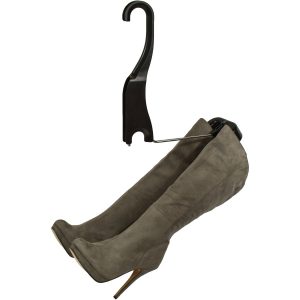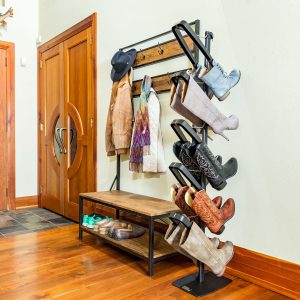 It’s never an easy set of tasks, but there’s a lot you can do to be prepared and organized.
It’s never an easy set of tasks, but there’s a lot you can do to be prepared and organized.If there’s a move on your horizon – whether across the block or across the country – you’ve got a major life event coming up! Moves can be stressful, scary, exhilarating, exhausting. There are so many large tasks to complete the move and so many little details that need to be taken care of on the day of the move. So the better prepared you can be beforehand, the smoother everything will go during and after the actual move.
Packing up your home or apartment takes time. It’s best to stretch out this task out and not attempt to do it all at once. Because the more systematic you can be about packing, the simpler your unpacking will be.
Begin with non-essentials, and set yourself a target date. If you’re going to be packing on the weekends and evenings, you can begin packing a month or so before your move. Go through your things and figure out what you won’t need for the next month. This is a good time to pack items like non-seasonal items; books; paintings and pictures; good china (assuming you’re not going to be throwing any fancy dinner parties in the next month).
 If you’ve browsed through our blog, you’ll notice how often we tackle the topic of decluttering in our articles. We love that word, and most importantly – we love what it means! Because we’re committed to helping our readers and customers live more organized lives, we know how good it is to regularly go through our belongings and see whether they still fit into our lives.
If you’ve browsed through our blog, you’ll notice how often we tackle the topic of decluttering in our articles. We love that word, and most importantly – we love what it means! Because we’re committed to helping our readers and customers live more organized lives, we know how good it is to regularly go through our belongings and see whether they still fit into our lives.
Packing is the perfect time to declutter. Check out our articles for help with that:
- Declutter, Unclutter and Clutter No More
- Purge, Purge, Purge
- Checking In: How’s That Decluttering Thing Coming Along?
Before you pack your first box, decide upon a staging area for packed boxes, whether you dedicate a corner of each room, or empty out a closet for this purpose. This way, you’ll have a spot to place each box as you finish it, and you’ll able to get a nice sense of accomplishment by seeing that pile grow and grow as you proceed!
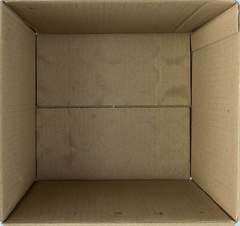 What you pack your belongings in will depend on the nature of your move. If you’re moving relatively close, then cardboard boxes are a good bet. They’re inexpensive yet sturdy, and you can recycle or give them away once you’re done with them. Your local hardware store will have a variety of shapes and sizes. You can also obtain boxes for free if you’re on a budget, but choose the place that you do so judiciously; you want the boxes that you use to be clean and pest-free. Liquor stores are good places to scope out for free boxes; if you live in an apartment building, check recycling spot for boxes that people discard.
What you pack your belongings in will depend on the nature of your move. If you’re moving relatively close, then cardboard boxes are a good bet. They’re inexpensive yet sturdy, and you can recycle or give them away once you’re done with them. Your local hardware store will have a variety of shapes and sizes. You can also obtain boxes for free if you’re on a budget, but choose the place that you do so judiciously; you want the boxes that you use to be clean and pest-free. Liquor stores are good places to scope out for free boxes; if you live in an apartment building, check recycling spot for boxes that people discard.
You can also use plastic bins and crates to pack, especially if you are moving further. Choose bins with handles, as these are much easier to grab and move. (Avoid plastic bins with lids that easily snap on and off as these will inevitably pop off while you’re carrying them on a flight of stairs or at the most inopportune moment. If you’ve already bought this, tape down the lids securely so that they don’t fly off.)
While it’s tempting to buy large boxes and containers, don’t.
When filled, they’ll be extremely heavy, and even if you’re hiring movers, will require more than one person to carry, thus slowing down your entire move. Instead, choose medium-sized containers for clothes and kitchenware, and smaller containers for books.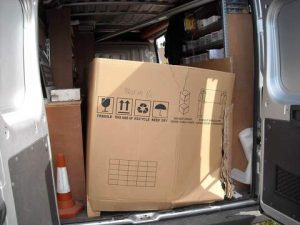
Layer the items that you pack – whether with bubble wrap, crumpled newspapers, or clothing. That’s right: Wrap each plate in a t-shirt, for example. Stuff socks and tights into mugs and wine glasses, then wrap in your sweaters. This way, you’ll save money on supplies AND save space within each box.
Label each box as soon as you’re finished packing it.
And label it in numerous spots, so that you can easily see at a glance across the room what’s in it. If you’re packing in plastic containers and bins, you can tape post-it notes or notecards to the sides or top with clear book tape. Cardboard boxes are easier to label – just grab a sharpie and go to town. Some moving boxes already have checklists on them where you can simply check a box next to its contents: Living Room, Bedroom, Dining Room, etc.
Packing can be a bit dreary, so to make it more enjoyable, download some podcasts and pop in some headphones. Put your phone in your pocket so that you’re hands-free and can easily pack. And place those boxes on a chair or a table so that you’re not constantly bending down – save that back for your upcoming move!

Day / Weekend Of
Plan your packing so that the day/weekend of your move, you have nothing left in your apartment or home but the barest of essentials – think of it as if you’re packing for a weekend trip. Toiletries, pajamas, clothes for the moving day, comfortable shoes, documents, etc. These are perfect to pack into a suitcase so that you’ll have them all on hand when you need them later.
Set yourself a timeline for your moving day. And build in lots of extra time. While it’s tempting to think, running over to U-Haul will take 30 minutes, the reality is that anything can – and might – happen to stretch that 30 minutes into 90. Build in time for meals so that you can stay fed and hydrated.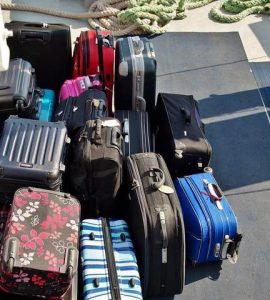
And, if possible, consider building in a spot of fun – whether it’s a walk around your old neighborhood to a proper sit-down lunch in your favorite spot. You’ll recharge your batteries both physically and mentally, and that’s super important for the long moving day. We also know it might sound ludicrous to do that (There’s no time! It’s so stressful!) but in the end, it’ll be so worth it: A little piece of respite in a stressful day.

